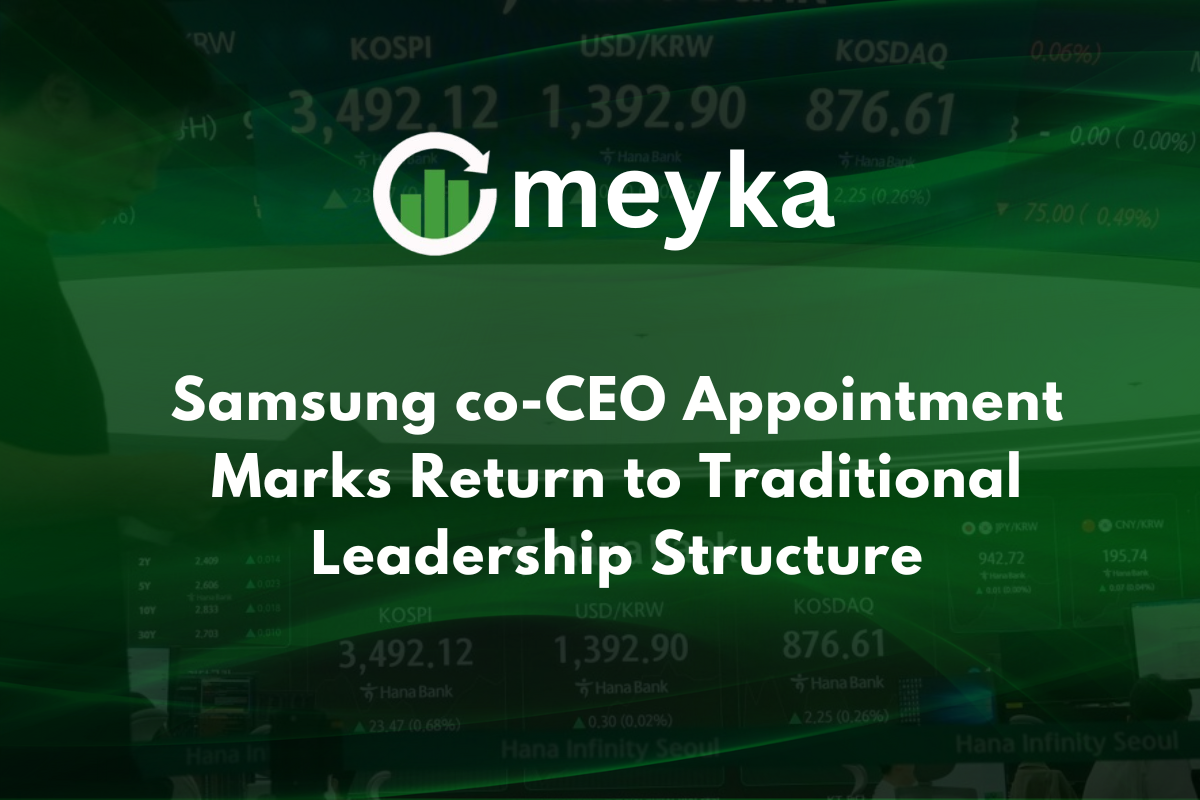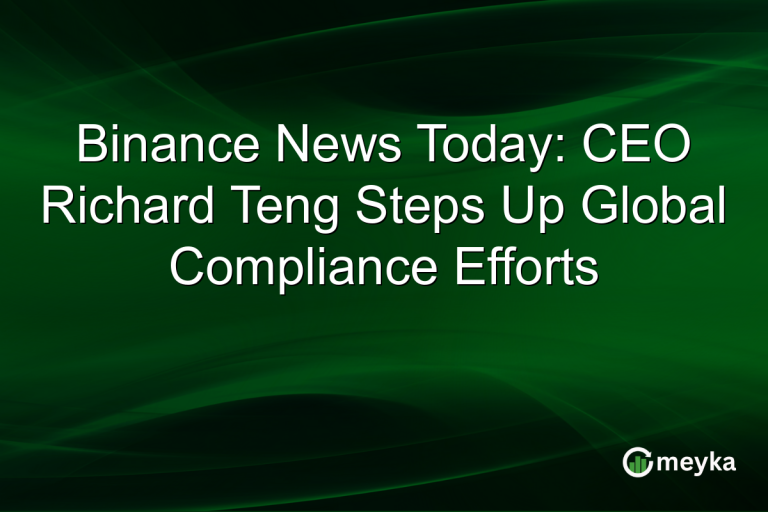Samsung co-CEO Appointment Marks Return to Traditional Leadership Structure
Samsung Electronics has officially reinstated its dual-leadership model by appointing Roh Tae‑moon as co-CEO, joining the existing co-CEO Jun Young‑hyun who heads the chip division.
This move restores the company’s long-standing governance approach, signals strategic clarity, and comes after a period of leadership change following the untimely death of former co-CEO Han Jong‑hee in March.
In this article we explore: why Samsung made this change, what it means for its business divisions (mobile, memory chips, AI), how the market sees it, and what to expect going forward.
What the Samsung co-CEO Appointment Involves
Key appointment details and structure
Samsung announced on 21 November 2025 that Roh Tae-moon will assume the role of co-CEO and head of the Device eXperience (DX) Division, overseeing mobile phones, TVs and home appliances.
Simultaneously, Jun Young-hyun, already in charge of the Device Solutions (DS) Division including chips and memory, remains co-CEO.
Thus, Samsung returns to a dual-leadership model where one leader focuses on consumer hardware and another on semiconductors, a structure that had been in place until Han’s death.
Why the timing and why now?
The appointment follows a period of sole-CEO leadership after Han’s passing in March 2025. Samsung had delayed formalising the co-CEO structure while navigating transitional management.
According to analysts, the move is aimed at renewing stability, reinforcing focus on Samsung’s strongest businesses (mobile and memory), and positioning the company amid intensifying competition in AI chips and devices.
What triggered the shift back to a dual-leadership model?
With the memory business recovering and mobile hardware increasingly linked to AI and foldable devices, Samsung appears to prioritise specialised leadership in both domains rather than a single leader across all operations.
Strategic Implications of the Samsung co-CEO Choice
Focus on mobile and consumer hardware
By elevating Roh, who has overseen the mobile business including the Galaxy S and foldables, Samsung signals that consumer devices remain critical to its growth. The DX Division includes phones, TVs, appliances and IoT devices.
This reflects Samsung’s intent to better connect its device ecosystem with next-gen AI, services and edge computing trends.
Strength in semiconductors and chip leadership
Jun Young-hyun retains leadership of Samsung’s semiconductor business, particularly memory and logic chips. In a time when AI and high-performance computing chip demand is rising, maintaining a strong DS leadership is vital.
The co-CEO structure thus aligns leadership with Samsung’s two biggest strategic growth engines: devices and chips.
Governance and group structure benefits
Returning to the dual-CEO format may also improve decision-making speed, clarity of responsibility and alignment across Samsung’s sprawling conglomerate.
One analyst called the choice “safe and predictable.”
This change may also support Samsung’s broader reform under chairman Lee Jae‑yong, aligning group management and strategic arms across electronics, heavy industry and AI.
Market and Analyst Reaction to the Samsung co-CEO Move
Stock market response
Despite the leadership announcement, Samsung’s shares fell roughly 4.2 % on the day, although this decline was partly tied to broader Asian tech weakness and uncertainty about AI valuations.
Still, the market is watching closely how the new leadership impacts execution of upcoming products and chip roadmap.
Analyst perspective
- Analysts note that mobile and memory are Samsung’s strongest performing units and the co-CEO move underscores that emphasis.
- Some caution that mere leadership changes are not enough, they will expect clear strategic execution, improved margins in memory, stronger foldable device cycles and competitive AI chip positioning.
Industry and competitive relevance
This appointment comes at a time when Samsung is facing intense competition: from TSMC in chip manufacturing, Apple Inc. and others in devices, and global ARM ecosystem changes. Aligning leadership across divisions may enhance Samsung’s ability to respond.
What Comes Next for Samsung Under the Co-CEO Structure
Key priorities for devices and DX division
- Execution of the next-gen Galaxy S and foldable models under Roh’s oversight.
- Integration of AI features, next-gen display and appliances, and strengthening Samsung’s SmartThings/IoT ecosystem.
- Expansion into services, home and automotive device ecosystems.
Key priorities for chips and DS division
- Scaling advanced memory production, closing technology gaps with competitors.
- Delivering logic and foundry expansion, especially in AI accelerators.
- Exploiting Samsung’s global manufacturing footprint in the U.S., Europe and Asia.
Corporate restructure and group alignment
Samsung also announced the appointments of Jang hyun‑yoon as President and CTO of the DX Division, and Park Hong‑kun as head of the Samsung Advanced Institute of Technology (SAIT). These picks indicate Samsung’s renewed focus on next-generation technologies.
Risks and Considerations Surrounding the Samsung co-CEO Change
Execution risk remains
While leadership alignment is important, the proof will be in execution: delivering strong device growth, improving chip competitiveness, and showing results in AI-enabled hardware and foundry.
Without that, leadership changes won’t move the needle.
External headwinds
Samsung faces global supply-chain disruptions, AI investment competition, memory-price volatility and geopolitical risks (especially around Korean-Chinese chip trade). The dual-leadership model must navigate these carefully.
Influence of group culture and structure
Samsung’s corporate structure is complex with descendants, cross-board leadership and conglomerate-style governance.
A dual-CEO model helps clarify accountability, but aligning multiple units across a global group remains challenging.
Conclusion
The appointment of Roh Tae-moon as co-CEO alongside Jun Young-hyun marks a meaningful return to Samsung’s traditional leadership structure. The move aligns with Samsung’s strategic priorities: strong focus on devices (mobile, appliances, IoT) and chips (memory, logic, AI).
It signals a commitment to stability, clarity and execution at a time when both divisions face significant global competition.
For Samsung, this is more than a personnel change, it is a statement about how it will run its future. For observers and investors, the key will be what the co-CEO structure enables: faster decision-making, clearer accountability, and better innovation outcomes.
If Samsung delivers on the promise of stronger products, more competitive chips and deeper AI integration, the co-CEO move may become an inflection point. If not, it may be seen as leadership theatre. Either way, this change deserves attention as Samsung navigates its next era of technology leadership.
Disclaimer
The content shared by Meyka AI PTY LTD is solely for research and informational purposes. Meyka is not a financial advisory service, and the information provided should not be considered investment or trading advice.






